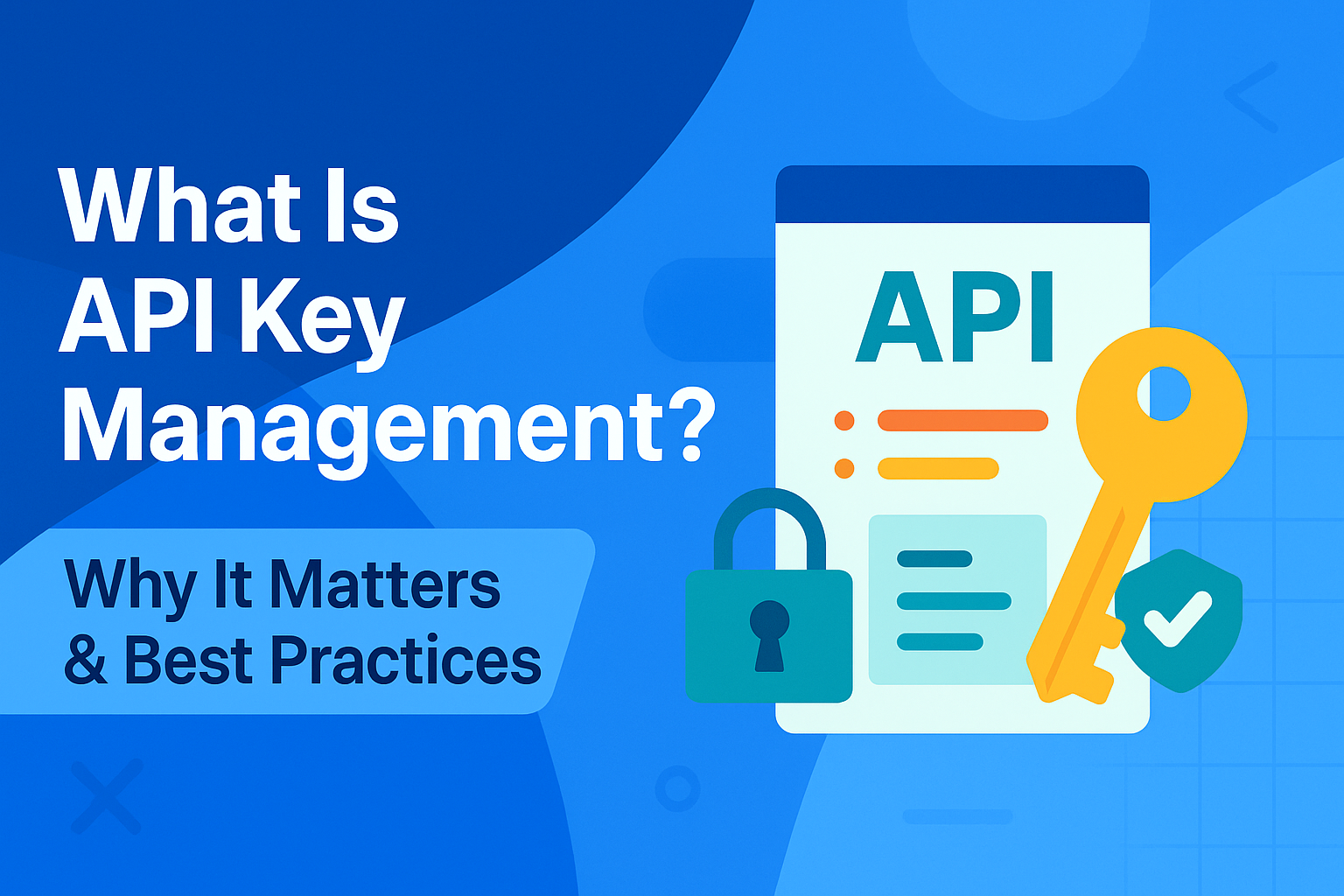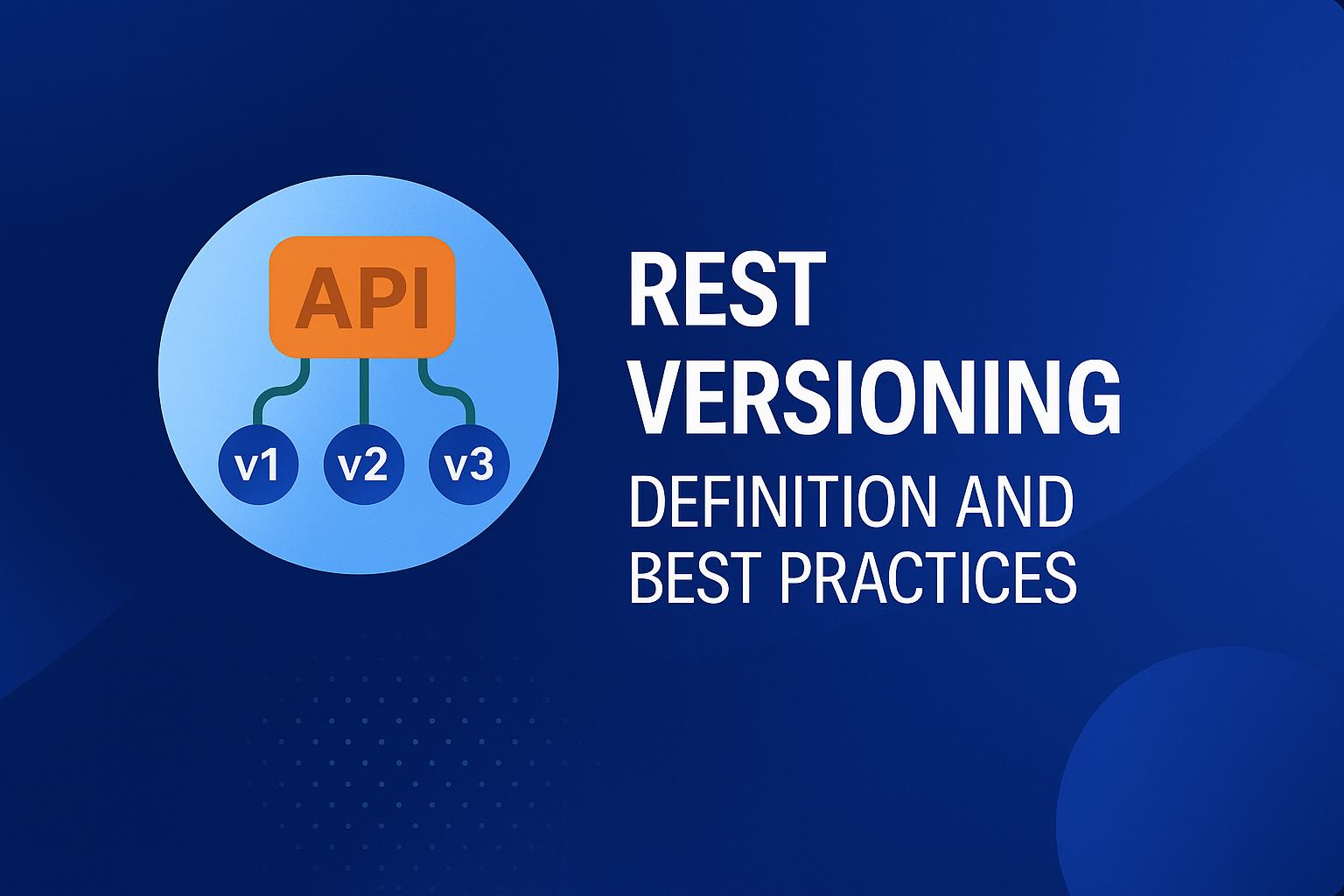
What if your API keys, the very thing powering your digital services, are also your biggest security blind spot?
You’re not alone if that question sends a chill down your spine. According to Salt Security’s State of API Security Report, 99% of organisations have experienced API security issues, with misused or exposed API keys often being the weak link.
Here is the thing: API keys are like digital master keys, handing access to sensitive data and critical systems. But too often, they’re left lying around: hardcoded in apps, dumped in GitHub repos, or shared over Slack.
Stolen keys lead to data breaches, crippling financial losses, and reputational carnage. Remember the 2020 Twitter breach? Compromised API keys let hackers hijack high-profile accounts including Obama’s and Musk’s to run a Bitcoin scam.
If done right, API key management can close one of the most exploited gaps in modern infrastructure.
In this guide, we’ll unpack what API key management really is, why it’s business-critical, and how to get it right with practical best practices.
What is API key management?
API key management is the practice of securely handling API keys from creation to retirement. It involves generating, storing, distributing, and rotating keys while monitoring their usage to prevent misuse. Think of it like managing digital keys to a building: you need to control who gets them, track their use, and replace them if they’re compromised.
Without proper API key management, unauthorized users or apps could exploit your APIs, leading to data breaches or service abuse.
Strong key management ensures only trusted systems access your APIs, helps detect suspicious activity, and allows quick revocation of compromised keys. It’s a must for security, compliance, and keeping your digital ecosystem locked down.
Why is API key management important?
API key management is essential because it helps secure access to your APIs, control how they’re used, and prevent misuse that could lead to data breaches or unexpected costs. When done right, it ensures only trusted users and apps can interact with your services, keeping your data safe and your operations running smoothly.
Here is why it matters:
1. Security
The main reason to manage API keys effectively is to prevent unauthorized access. APIs often expose sensitive data or connect directly to business-critical systems.
For instance, in June 2021, LinkedIn’s authentication-free API allowed hackers to scrape data from 700 million LinkedIn users. The scraped data included sensitive information such as email addresses and phone numbers. The data was then sold on dark web forums, which posed a significant risk for targeted phishing attacks.
Without proper key management, malicious actors can exploit unprotected or leaked API keys to steal data, disrupt services, or worse.
2. Compliance
Many industries operate under strict data protection regulations, like GDPR, HIPAA, or PCI-DSS. These laws require businesses to safeguard personal and financial data.
API key management plays a central role in meeting these requirements because it ensures that only authorized systems or users can access sensitive endpoints.
Well-managed keys support audit trails, help you enforce least privilege access, and give you clear records of who accessed what and when, which are key elements of compliance reporting.
3. Control
API key management gives businesses control over who is using their APIs, when, and how. By assigning unique keys to different users, teams, or partners, organizations can track usage patterns, limit access to specific features, and revoke access instantly if needed.
This level of control helps businesses prevent misuse, troubleshoot errors, and maintain a reliable user experience. It also allows for API versioning and sandboxing, so developers can experiment safely without affecting production data.
4. Performance
Managing API keys lets teams monitor real-time usage, detect spikes in traffic, and optimize backend performance. If your APIs are under strain, you can identify which users or endpoints are causing the load and take action, whether that means throttling, caching, or scaling infrastructure.
What are the consequences of poor API key management?
Poor API key management can open the door to serious risks like data breaches, API abuse, unexpected financial losses, and even legal trouble.
Exposed or mismanaged keys can be exploited by attackers to access sensitive systems, disrupt services, and steal valuable information, which can lead to both operational chaos and long-term reputational damage.
Here is a detailed breakdown of the consequences:
1. Data breaches and API abuse
APIs act as gateways to critical backend systems and databases. When API keys are poorly managed such as hardcoded into client-side apps, stored in plain text, or shared openly they can easily fall into the wrong hands.
Once attackers gain access, they can retrieve personal user data, financial details, or internal business logic.
2. Financial loss and reputational damage
Every API call has a cost, whether it's a direct usage charge (e.g., cloud-based APIs with per-call pricing) or an indirect cost related to infrastructure.
When someone hijacks an API key, they can rack up thousands of dollars in usage fees without the organization realizing until the damage is done.
Worse, attackers might deliberately run scripts to inflate traffic and push the company toward quota overages.
3. Regulatory non-compliance
Data security laws such as GDPR, HIPAA, and PCI DSS hold companies accountable for safeguarding user data. Exposed API keys, especially those leading to personal information can constitute a compliance violation.
For example, if a healthcare provider’s API exposes patient data due to a mismanaged key, that’s a HIPAA breach. Regulators can respond with hefty fines, public reporting requirements, and mandatory audits. GDPR violations, depending on the severity, can lead to fines up to €20 million or 4% of annual global turnover.
4. Intellectual property theft
Apart from data, APIs can also expose business logic, proprietary algorithms, or internal tools. If a developer key tied to a machine learning model or algorithm is leaked, the entire competitive edge of a company can be compromised.
This isn’t theoretical. In many SaaS products, APIs are central to how the service works. A stolen key could allow someone to clone features, reverse engineer functionality, or even build competing products faster.
How should you manage your API keys?
To manage your API keys effectively, generate unique keys with limited access, store them securely using environment variables or secret managers, monitor their usage for unusual activity, rotate them regularly, and revoke them immediately if compromised. These steps reduce the risk of unauthorized access, data leaks, and security threats.
What are the core functions of API key management?
API key management ensures secure control over how APIs are accessed by managing keys from creation to deactivation. It involves secure key generation, encrypted storage, access control, usage monitoring, revocation, rate limiting, and periodic rotation to protect sensitive data and maintain API performance and security.
Let’s explore these core functions in-depth:
1. Secure generation and storage
The starting point of any API key lifecycle is key creation. But not just any key will do.
API keys should be generated using strong, random algorithms to prevent guesswork or brute-force attacks. They need to be long, unique, and difficult to predict. Weakly generated keys are an open door for malicious actors.
Once created, these keys must be securely stored, ideally in encrypted environments. Keys should never be hardcoded in frontend code or version-controlled files like GitHub repos. Instead, they belong in secure vaults or environment variables with restricted access.
Popular solutions like AWS Secrets Manager or HashiCorp Vault help organizations securely store and manage keys across services.
2. Key distribution and usage monitoring
Once keys are generated, they need to be delivered to the right users or systems, but that process must be secure. API keys should be distributed using encrypted channels (like HTTPS), and systems should avoid sending them via unprotected email or chat.
After distribution, monitor how keys are used. This includes tracking:
- Which endpoints are accessed
- How frequently the keys are used
- Whether usage patterns suggest abuse or compromise
3. Revocation and access control
Sometimes, API keys need to be shut down. Whether due to compromise, overuse, or simply reaching end-of-life, the ability to revoke keys is a vital part of the management process. A revoked key should immediately lose access to protected services.
API key management also supports fine-grained access control. Not all keys should have the same level of access. Some may only allow read-only access, while others might permit write operations. Limiting what each key can do helps contain potential damage in case of leaks.
4. Rate limiting and auditing
If one API client suddenly makes thousands of requests per second, it can slow or even crash your API. To prevent that, API key management enforces rate limiting—setting a ceiling on how many calls a user or application can make within a given time.
These limits can be based on IP, key type, user plan, or other variables. They're critical for protecting against DDoS attacks or misconfigured clients.
Equally important is auditing. Good API key management systems keep detailed logs of key usage. These logs are essential for:
- Investigating breaches
- Troubleshooting problems
- Proving compliance (e.g., for SOC 2 or GDPR)
Auditing ensures there’s a historical record of what was accessed, by whom, and when.
5. API key rotation and discovery
Over time, even secure keys can be compromised. That’s why key rotation (the regular replacement of API keys) is a best practice. Ideally, teams should automate key rotation on a schedule (monthly or quarterly) and support dual-key models, allowing the new key to be used while phasing out the old one.
Finally, some API management tools offer API discovery features, helping teams identify which APIs are in use and what keys are calling them. This gives administrators visibility into their API ecosystem, reducing the risk of forgotten or unmonitored endpoints being exposed.
Best practices for API key management
To manage API keys securely, encrypt them, limit access, monitor usage, rotate keys regularly, and audit them frequently. Store keys securely, use separate keys for development and production, and implement robust logging and monitoring. These practices protect sensitive data, reduce misuse risk, and maintain secure communication between systems.
1. Protect API keys with strong encryption
API keys are essentially credentials. If they’re stored or transmitted in plaintext, they’re vulnerable to interception, especially in environments where attackers might access memory dumps, logs, or environment variables.
Here’s how to protect API keys:
- Always use AES-256 encryption or equivalent to secure stored API keys.
- If you’re working with a cloud provider, use managed services like AWS KMS, Azure Key Vault, or Google Cloud KMS to encrypt and manage secrets.
- Never hard-code keys in your source code. Use environment variables or secret management tools to inject them securely.
2. Limit access to API keys
Every additional person or service with access to an API key increases the risk of misuse, either by accident or by malicious intent.
Here is how to limit access to API keys:
- Apply the principle of least privilege: only grant access to the minimum set of users or systems that need it.
- Use IAM (Identity and Access Management) policies to restrict who can read or use the API keys.
- Where applicable, tie API key usage to specific IP addresses, referrers, or applications to reduce exposure.
Pro tip: In team environments, avoid sharing the same key among developers. Issue personal or service-specific keys with restricted scope.
3. Monitor API key usage
You can’t protect what you don’t observe. Monitoring allows you to spot anomalies like spikes in traffic, access from unexpected regions, or unauthorized endpoints.
Here is how to do it:
- Enable usage logs wherever your API keys are used—track endpoints, response codes, and timestamps.
- Use rate-limiting and throttling to prevent abuse and to detect if a key is being used beyond normal behavior.
- Integrate your monitoring into a dashboard (e.g., Datadog, CloudWatch, or Prometheus) for better visibility.
4. Rotate API keys regularly
Even well-protected keys can leak. If you rotate them periodically, you reduce the window of time an attacker could exploit a compromised key.
Here is how to rotate API keys:
- Schedule automatic key rotation every 30–90 days, depending on the sensitivity of the system.
- Use APIs that support graceful rotation, allowing you to overlap old and new keys for a short time to avoid downtime.
- Maintain version control for keys and update all consumers accordingly.
5. Conduct regular API key auditing
You’d be surprised how many unused, forgotten keys are still active in production systems. These are ticking time bombs.
Here is how to audit API keys regularly:
- Maintain an inventory of all issued keys, their owners, scopes, and last-used timestamps.
- Perform quarterly audits to review which keys are still in use and revoke stale or unnecessary ones.
- Document every audit in a version-controlled format for accountability.
Pro tip: Set up an automated script or tool that checks for unused keys older than 90 days.
6. Implement secure API key storage and access
Even the most secure API key is useless if your storage method is vulnerable. Developers often leave keys in Git repos or store them in config files accessible by too many systems.
- Store keys in secure vaults like HashiCorp Vault, AWS Secrets Manager, or Doppler.
- Avoid putting keys in .env files that are committed to version control; instead, use .gitignore religiously.
- For serverless apps, use cloud-native environment configuration tools that inject secrets securely at runtime.
Security tip: Run regular static code analysis tools to ensure API keys aren’t accidentally leaked in source code or logs.
7. Use separate API keys for different environments
Sharing a production key in a development or staging environment is a major risk. A simple coding error or accidental exposure during testing can compromise live systems.
Here are the best practices to follow:
- Create dedicated API keys for development, staging, and production.
- Apply different scopes and rate limits depending on the environment.
- Label and document keys clearly so developers don’t mix them up.
Simple trick: Color-code API keys or use naming conventions like prod_key_x, dev_key_y to avoid confusion.
8. Conduct regular monitoring and logging
Monitoring tracks real-time behavior, but without historical logging, you lose the ability to investigate incidents or trace anomalies later.
Here is how to conduct regular monitoring and logging:
- Log all API key usage events with timestamp, source, endpoint, and user/service identity.
- Use centralized logging platforms (e.g., ELK Stack, Splunk, or Cloud-native solutions) to store and analyze logs.
- Retain logs securely for a reasonable time window—at least 90 days for most applications, longer for compliance-heavy sectors.
For industries under GDPR, HIPAA, or SOC2, detailed audit trails of key usage can help meet requirements.
Ultimately, poor API key management is one of those issues that doesn’t cause problems until it suddenly really does. And when it does, the consequences range from embarrassing data leaks to full-blown breaches. By following these best practices, you build strong guardrails around your infrastructure.
Manage your API keys with Digital API
API keys are probably the most sensitive aspects of your API ecosystem, hence they need to be managed effectively. But without the right tool, managing API keys can be a nightmare.
Enter Digital API. This AI-powered API management platform helps you manage your API keys by providing robust tools and features to control access, monitor their usage, and enhance security.
Some of the prominent DigitalAPI features include automatic API key deactivation and rotation, usage monitoring, and the ability to set permissions and limits of key usage.
Want to experience how Digital API works first-hand? Book a demo here to see it in action.
FAQs on API key management
1. What’s the difference between API key management and OAuth?
API key management controls access using static tokens, ideal for simple authentication. OAuth is more secure and user-centric, often used for delegated access with expiration and scopes. Use API keys for server-to-server or internal APIs, and OAuth when managing user permissions or integrating with third-party platforms.
2. How to manage API keys in a production environment?
Store API keys securely using environment variables or secrets managers like AWS Secrets Manager or HashiCorp Vault. Avoid hardcoding keys. Regularly rotate them, monitor usage, and apply IP whitelisting or usage quotas. Always limit access to only what's necessary using scoped permissions to reduce security risks.
3. How do I manage API keys for third-party developers?
Offer a developer portal where third-party users can generate, revoke, or regenerate their keys. Enforce rate limits, key expiration, and scoped access. Monitor usage and provide clear documentation. Alert developers on suspicious activity and enable self-service key rotation for better security and developer experience.
4. How to set up API key management for a public API?
Create a self-service system for users to sign up and generate API keys. Track usage with analytics and enforce quotas to prevent abuse. Add IP restrictions and scopes to control access. Public APIs benefit from visibility, so provide solid docs and make onboarding frictionless yet secure.
5. How often should I rotate API keys?
API keys should be rotated every 60–90 days or sooner if there’s a potential security breach. Regular rotation helps prevent unauthorized access due to exposed or leaked keys. Automating the rotation process and using versioned keys can minimize downtime and ensure service continuity during updates.
6. Can I limit the usage of an API key?
Yes, you can restrict API key usage by setting limits such as IP address filtering, usage quotas, rate limits, and access scopes. These restrictions help protect your system from abuse, unauthorized access, and excessive usage. Most API management platforms and cloud providers support these configuration options.
7. How do I find out who is using my API keys?
Monitoring and logging API activity is the best way to identify users of your API keys. API gateways and cloud services provide usage analytics, including IP addresses, request origins, endpoints accessed, and timestamps. Integrating this data with identity systems can help trace specific users or applications.
You’ve spent years battling your API problem. Give us 60 minutes to show you the solution.
.svg)

%20(1).png)





